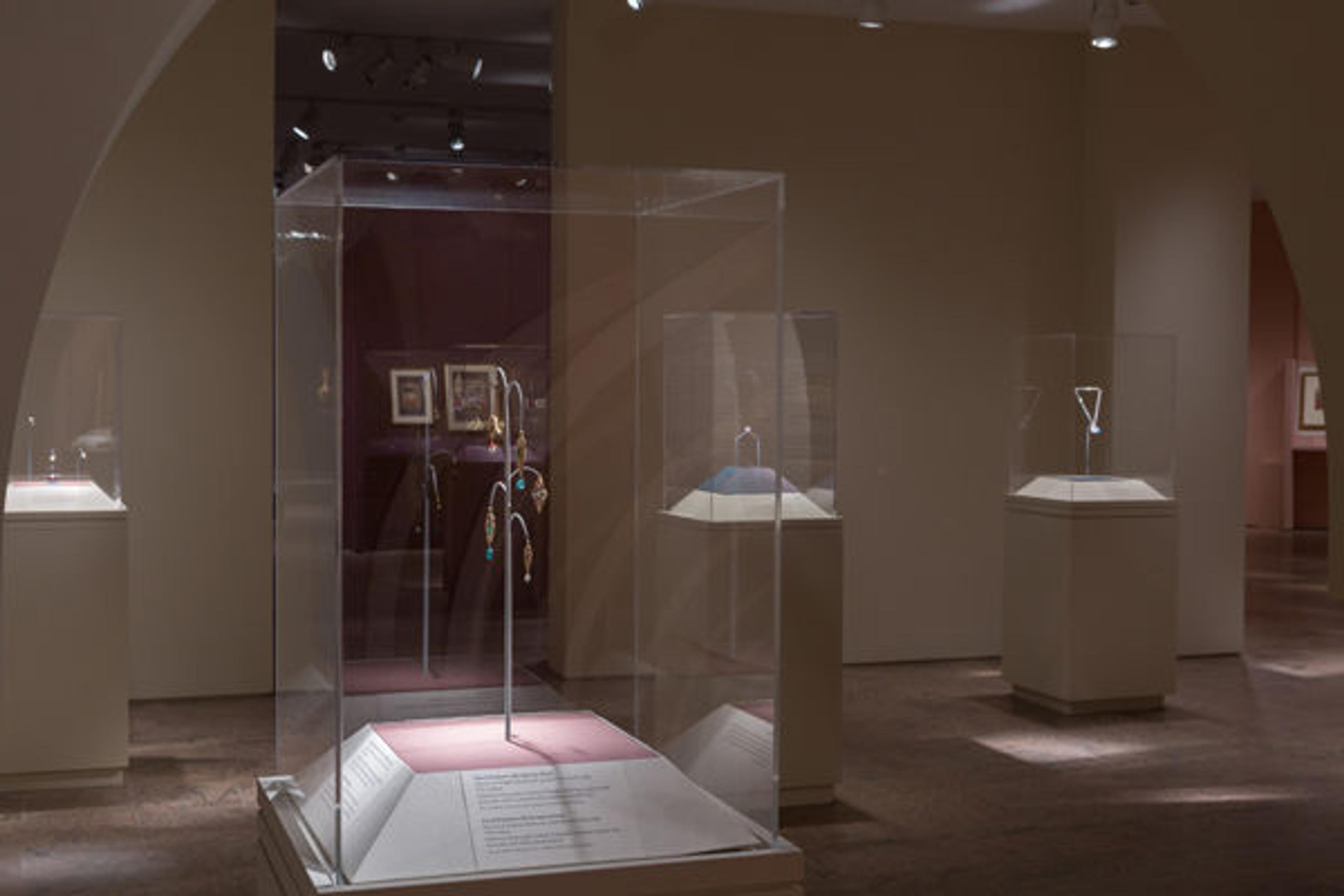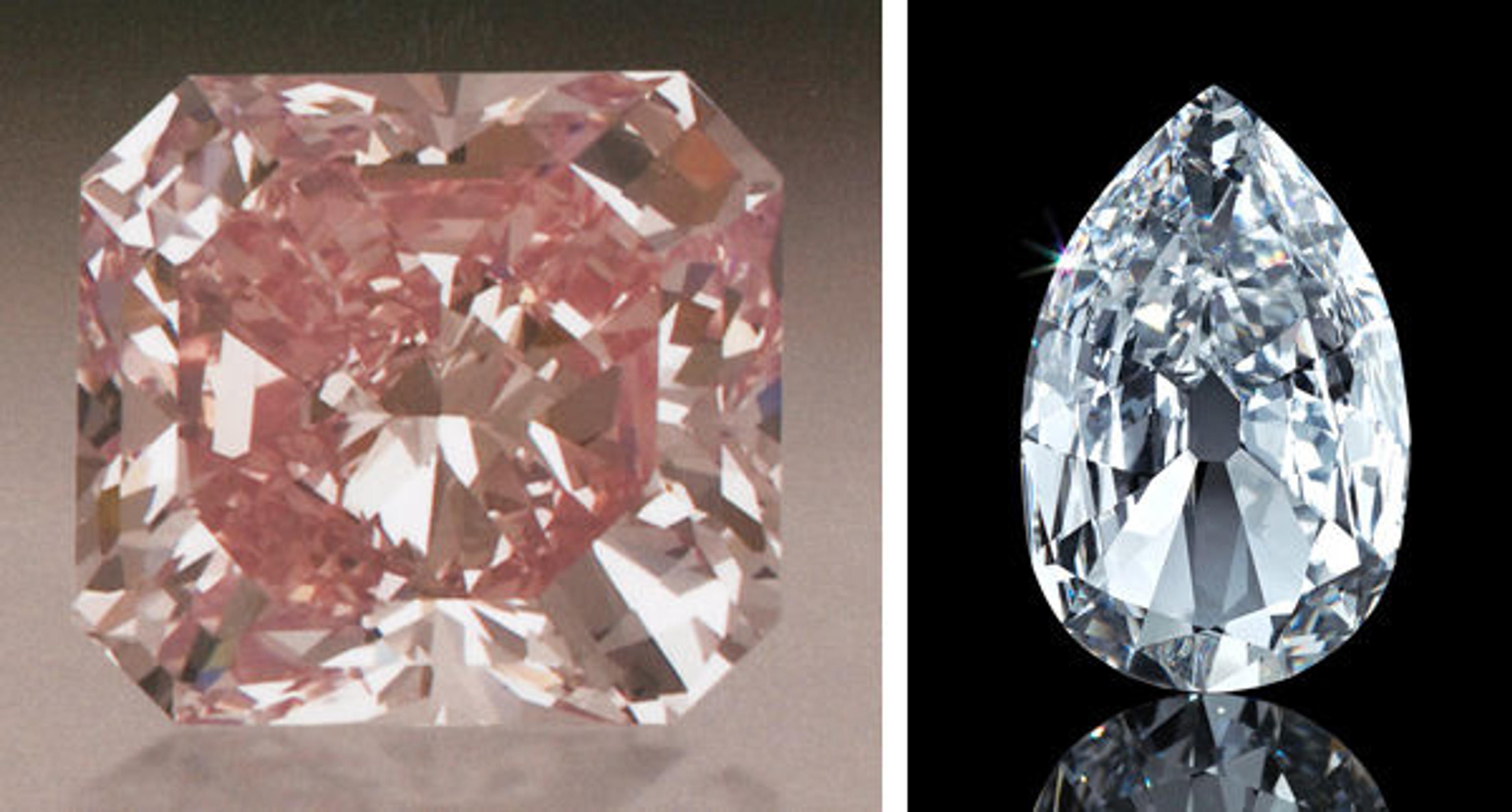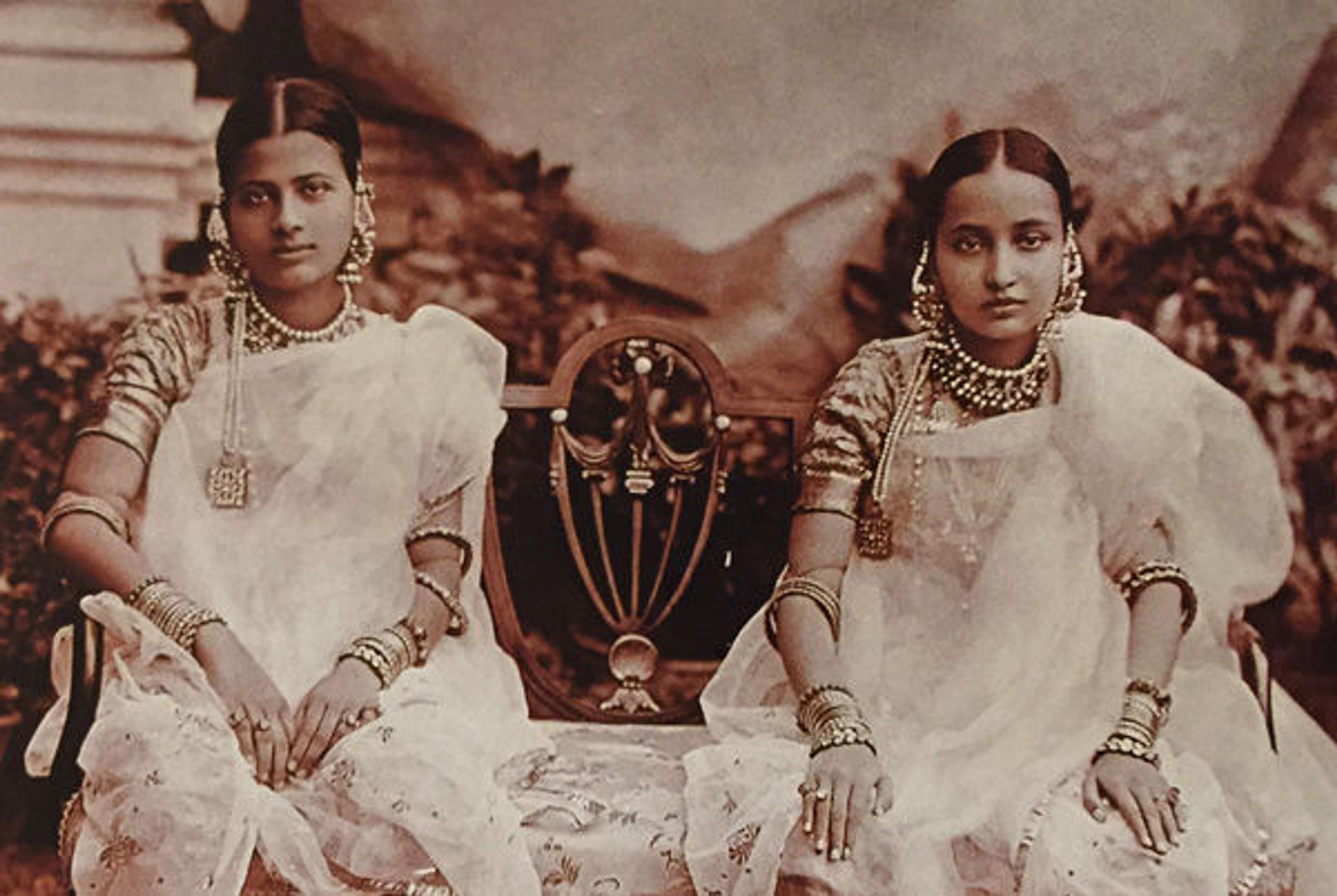Opulence, Indeed: Diamonds of the Deccan

"Idol's Eye" diamond with Harry Winston necklace, Diamond: early 17th century; Necklace: mid-20th century. Islamic. Antique triangular modified brilliant-cut light blue diamond. 70.21 carats. The Al-Thani Collection
«One of the biggest draws to the exhibition Sultans of Deccan India, 1500–1700: Opulence and Fantasy is the bling—especially the large Golconda diamonds on display in the first section. One of our recent visitors to the show was so inspired by the glittering surroundings that he actually proposed to his girlfriend there!»

Diamonds on display in the Sultans of Deccan India exhibition
While engagements in New York are usually accompanied by a diamond ring, this custom is not part of the Indian tradition. Diamonds were instead considered talismanic, and the sixth-century text of the Brhatsamhita stated: "He who wears a diamond will see dangers recede from him, whether he be threatened by serpents, fire, poison, sickness, thieves, flood, or evil spirits." Fittingly, gems with such power were historically cut into the form of an amulet, or ta'widh.
The 56.7-carat Shah Jahan diamond is an example of this shape, which survives only in a few rare cases. A projection at the top of the diamond has two holes where a necklace would have attached to the gem.

Left: Shah Jahan diamond, 17th century. Islamic. Pendant of taviz (amulet) outline; facet-cut from diamond (material described as "fancy light pink"), drilled. 56.72 carats. The al-Sabah Collection, Dar al-Athar al-Islamiyyah, Kuwait. Right: Quatrefoil pendant, first quarter 17th century. Islamic. Fabricated from gold; worked in kundan technique and set with diamonds, rubies and emeralds. The al-Sabah Collection, Dar al-Athar al-Islamiyyah, Kuwait
This flat diamond illustrates the Deccani penchant for gemstones in talismanic shapes that maintain a heavy volume. Though the flat cut may seem unusual, it would have been en vogue for seventeenth-century India. Diamonds that maintain their historical cut, such as this one, are extremely rare, as it is much more common for stones to be recut by later owners. The Shah Jahan diamond also illustrates one of the most interesting properties of diamonds, which is that they have perfect cleavage in four directions, meaning that the grain can be neatly sliced by cleaving. The effect, akin to a windowpane, is also visible in some of the pendants on view in the exhibition.
Diamonds were among the most popular exports from the Deccan, and Europeans such as Jean-Baptiste Tavernier, Jean Chardin, Elihu Yale, and Nathaniel Cholmley famously wrote about and sought out these gems. The taste for diamonds in the West was quite different, however, which is evidenced by the shapes and faceting of the stones that have passed through European collections, such as the "Idol's Eye," "Arcot II," and the "Agra"; these gems are more highly polished to create maximum sparkle and fire. As diamond-cutting technology advanced, gems such as these were cut and recut to reflect current tastes, ultimately losing carats but maximizing brilliance and color.

Left: "Agra" diamond, 16th century. India, Golconda. Islamic. Cut-cornered, rectangular mixed-cut, fancy intense pink diamond. 28.15 carats. The Al-Thani Collection. Right: "Arcot II" diamond, late 18th century; modified 1959 and 2011. India, Golconda. Islamic. Pear-shaped, brilliant-cut diamond. 17.21 carats. The Al-Thani Collection
The history and provenance of these gems only adds fascination to their beauty. Take, for example, the "Idol's Eye" diamond: at 70.21 carats, this brilliant-cut, light-blue diamond is the largest in the show. Named because of the legend that it once formed the eye of a temple statue, the diamond traveled through a number of international collections, including that of Ottoman Sultan Abdul Hamid (r. 1876–1909), Denver socialite May Bonfils Stanton (who wore it to breakfast every morning), and Imelda Marcos, the wife of the former Philippine President Ferdinand Marcos.
The "Agra," a fancy, intense pink diamond weighing 28.15 carats, is believed to have an even longer, more regal history. The diamond is named for its probable presence in Agra with the Mughal Emperor Babur (r. 1526–30), who wore it in his turban. In the nineteenth century, the "Agra" diamond was owned by the eccentric Duke Charles II of Brunswick (1804–1873), as well as the same Ottoman Sultan who owned the "Idol's Eye," Abdul Hamid.
The final section of the exhibition presents a selection of jewels from Hyderabad—the wealthy city in Golconda that became the center for the Asaf Jahis from the eighteenth through the twentieth century—that were worn by the wives of the Nizam. A pair of earrings with large diamonds are especially stunning. In two pieces, a cascade of pearls and diamond drops would have hung on the front of the ear while the large diamonds and suspended bell-shaped ornaments would be hung from the lobe. The effect would have been opulent to say the least!

Left: Diamond earrings and pearl supports, late 18th century. India, Deccan, Hyderabad. Islamic. Diamond, pearls, gold, emeralds, and enamel. Private Collection, New York

Mahal-e-Mubarak, wives of the Seventh Nizam of Hyderabad, Mir Osman Ali Khan (r. 1911–1967), ca. 1915. The women wear the earrings, guluband, and square pendant types that are on display in the exhibition. Photo by Raja Deen Dayal & Sons; published in Posing for Posterity: Royal Indian Portraits by Pramod Kumar KG, London: I. B. Tauris, 2012.
All of these gems are dramatically displayed throughout the exhibition, and do not disappoint! Be sure to visit these diamonds in person before Sultans of Deccan India, 1500–1700: Opulence and Fantasy closes on July 26.
View all blog posts related to this exhibition.
Courtney Stewart
Courtney A. Stewart is the senior research assistant in the Department of Islamic Art.